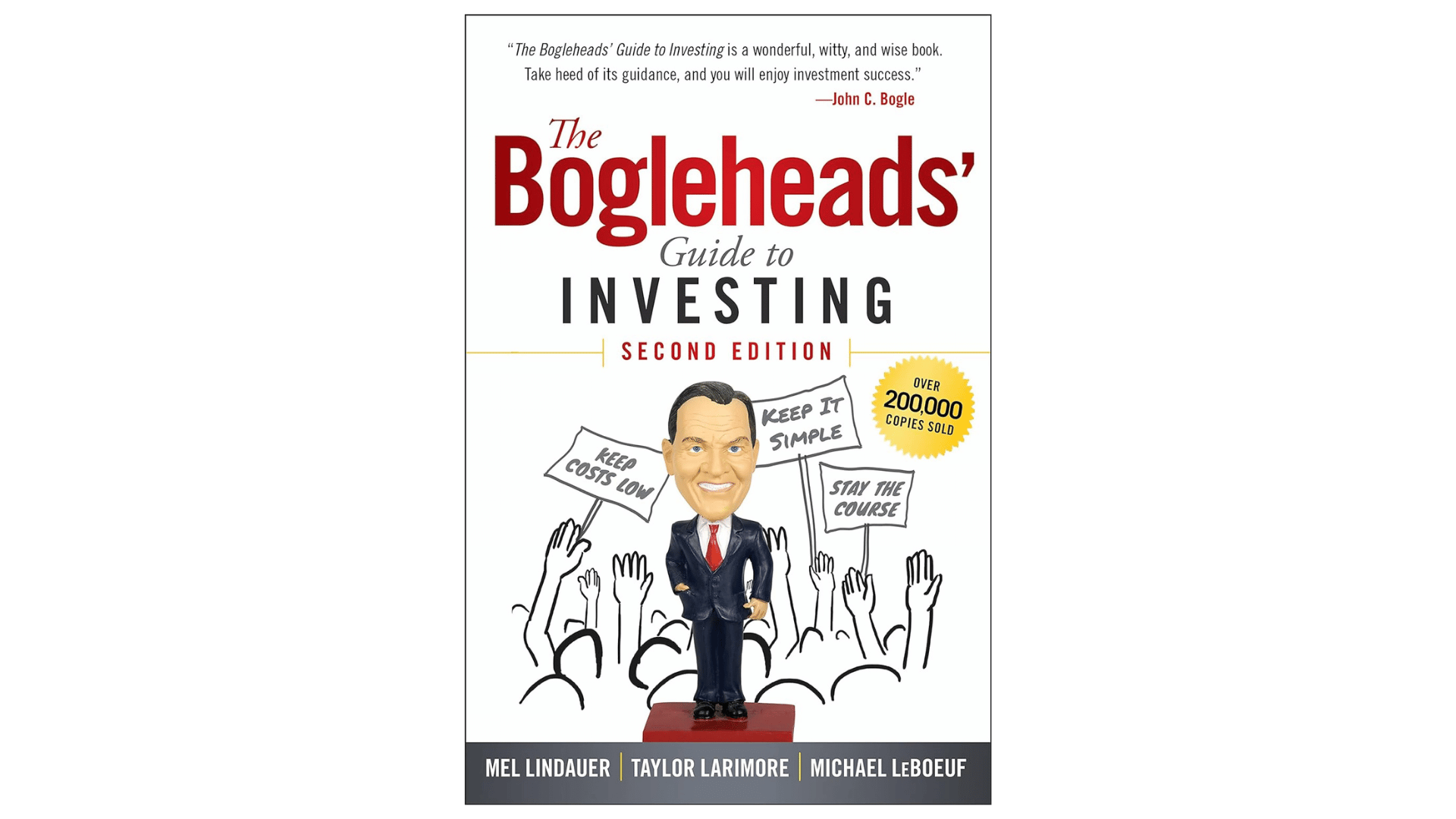
|
The Bogleheads’ Guide to Investing is an essential, straightforward guide for anyone aiming to take control of their financial future. Written by Taylor Larimore, Mel Lindauer, and Michael LeBoeuf, the book is based on the principles of John C. Bogle, founder of Vanguard and creator of the first index fund.
It provides actionable advice for building wealth through simplicity, discipline, and low-cost investing.
Here is a detailed overview of the book’s key lessons and insights.
Table of Contents
1. The Boglehead Philosophy
The Boglehead philosophy focuses on simplicity and long-term success through low-cost investing strategies. It encourages avoiding complexity and focusing on what truly works for wealth-building.
Key principles include:
– Living below your means: Prioritize saving over spending to build lasting wealth.
– Consistent saving and investing: Regularly contribute to your investment portfolio to stay on track.
– Minimizing costs: Choose low-cost funds and strategies to avoid unnecessary fees.
– Ignoring market timing: Avoid trying to predict short-term market movements.
– Maintaining discipline: Stick to your plan even when markets fluctuate.
This philosophy is simple yet powerful, making it suitable for beginners and experienced investors alike.
2. The Power of Saving Early and Often
Starting early and saving consistently is one of the most impactful steps toward financial success. The authors highlight the immense power of compound interest.
Key takeaways include:
– Start now: The earlier you begin saving, the more time your money has to grow.
– Small steps matter: Even small, regular contributions can lead to significant growth over time.
– Pay yourself first: Treat savings as a non-negotiable priority by automating contributions.
The message is clear: It’s never too early or too late to start building wealth.
3. Keeping Costs Low
Cost control is a cornerstone of the Boglehead strategy. High fees can drastically reduce investment returns over time, so the authors stress the importance of minimizing expenses.
Tips for reducing costs:
– Invest in index funds: These funds have lower fees and often outperform actively managed options.
– Check expense ratios: Opt for funds with minimal management fees.
– Avoid frequent trading: Reducing transactions lowers costs and tax liabilities.
By minimizing fees, investors can maximize their long-term returns.
4. Asset Allocation and Diversification
Asset allocation and diversification are critical for managing risk and achieving steady returns.
The book explains:
– Asset allocation: Divide investments among asset classes (stocks, bonds, cash) based on risk tolerance.
– Diversification: Spread investments across various sectors and geographies to minimize risks.
– Rebalancing: Periodically adjust your portfolio to maintain the desired allocation.
This strategy ensures a balanced portfolio that can withstand market fluctuations.
5. Emphasizing Index Funds
Index funds are the backbone of the Boglehead approach to investing. These funds replicate the performance of a specific market index, providing broad market exposure at low cost.
Benefits of index funds:
– Low fees: Index funds typically have much lower expense ratios than actively managed funds.
– Simplicity: They eliminate the need for extensive research or stock-picking.
– Diversification: A single index fund offers exposure to many companies and sectors.
The authors recommend index funds as the best choice for most investors seeking long-term growth.
6. Avoiding Common Mistakes
The book identifies common mistakes that can derail an investor’s progress and provides advice on how to avoid them.
Key mistakes to avoid:
– Chasing past performance: Don’t assume that a fund’s historical success guarantees future returns.
– Market timing: Trying to predict market trends often leads to poor outcomes.
– Ignoring costs: High fees and expenses erode returns over time.
– Emotional investing: Fear and greed often result in hasty, detrimental decisions.
Staying informed and disciplined helps investors avoid these traps.
7. Utilizing Tax-Advantaged Accounts
Tax-advantaged accounts are powerful tools for wealth-building. They allow for tax-deferred or tax-free growth, depending on the account type.
Examples of tax-advantaged accounts:
– 401(k) or 403(b): Employer-sponsored retirement accounts with tax benefits.
– Roth IRA: Offers tax-free growth and withdrawals in retirement.
– HSA (Health Savings Account): Provides tax advantages for medical expenses.
Maximizing contributions to these accounts is a smart way to grow wealth more efficiently.
8. Staying Committed to Your Plan
One of the book’s key messages is the importance of sticking to your plan. Success in investing requires patience and resilience, especially during market downturns.
Tips for staying on course:
– Ignore market noise: Avoid reacting to daily market fluctuations.
– Stay focused: Keep your eyes on long-term goals rather than short-term gains.
– Embrace simplicity: A straightforward investment plan is easier to follow and often more effective.
The authors emphasize that disciplined investors are more likely to achieve their financial objectives.
9. Final Thoughts
The Bogleheads’ Guide to Investing is a must-read for anyone serious about building wealth. It provides a clear and practical roadmap for managing finances and achieving financial independence.
Key lessons include:
– Focus on low-cost index funds.
– Start saving and investing early.
– Adopt a diversified and balanced portfolio.
– Minimize costs and taxes.
– Stay disciplined and avoid emotional decisions.
By following the Boglehead principles, readers can simplify their investment strategies and secure a prosperous financial future. This book is not just a guide—it’s a philosophy that empowers anyone to achieve financial independence with confidence and clarity.
